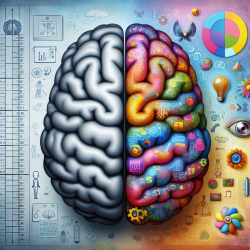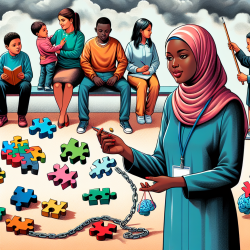Introduction
In the realm of speech-language pathology, understanding the neurological underpinnings of language acquisition is crucial. A recent study titled Cortical Thickness in Bilingual and Monolingual Children: Relationships to Language Use and Language Skill sheds light on how bilingualism affects brain development in children. This research provides valuable insights that can be leveraged to improve therapeutic outcomes for bilingual children.
Key Findings from the Study
The study utilized data from the Adolescent Brain Cognitive Development (ABCD) Study, focusing on children aged nine to ten. It revealed significant differences in cortical thickness between bilingual and monolingual children. Bilingual children exhibited thinner cortex in several brain regions compared to their monolingual peers. This finding aligns with the Dynamic Restructuring Model, which suggests that bilingual experiences influence brain structure to support language proficiency.
Moreover, within bilingual children, increased English use was linked to greater cortical thickness in frontal and parietal regions, while a larger English vocabulary was associated with thicker cortex in frontal and temporal regions. These results underscore the complex interplay between language use, vocabulary, and brain structure in bilingual children.
Implications for Practitioners
For speech-language pathologists, these findings emphasize the importance of considering bilingualism as a dynamic and influential factor in language development. Here are some practical steps practitioners can take:
- Incorporate Bilingual Contexts: Design therapy sessions that integrate both languages spoken by the child. This approach can help reinforce neural pathways associated with each language.
- Focus on Vocabulary Expansion: Encourage activities that boost vocabulary in both languages. This can lead to structural brain changes that support language proficiency.
- Monitor Language Use: Pay attention to how often and in what contexts the child uses each language. Tailor interventions to promote balanced language use, which can enhance cognitive and linguistic outcomes.
Encouraging Further Research
While this study provides valuable insights, it also highlights the need for further research. Future studies could explore the impact of age of acquisition on brain structure and investigate other measures of brain development, such as cortical volume and surface area. By deepening our understanding of bilingualism's effects on the brain, we can refine therapeutic approaches and optimize outcomes for bilingual children.
Conclusion
The study of cortical thickness in bilingual and monolingual children offers compelling evidence of how bilingual experiences shape brain development. For practitioners, these insights provide a foundation for enhancing therapeutic interventions and supporting bilingual children's language skills. By embracing the complexity of bilingualism, we can foster more effective and personalized approaches to speech-language therapy.
To read the original research paper, please follow this link: Cortical Thickness in Bilingual and Monolingual Children: Relationships to Language Use and Language Skill.










